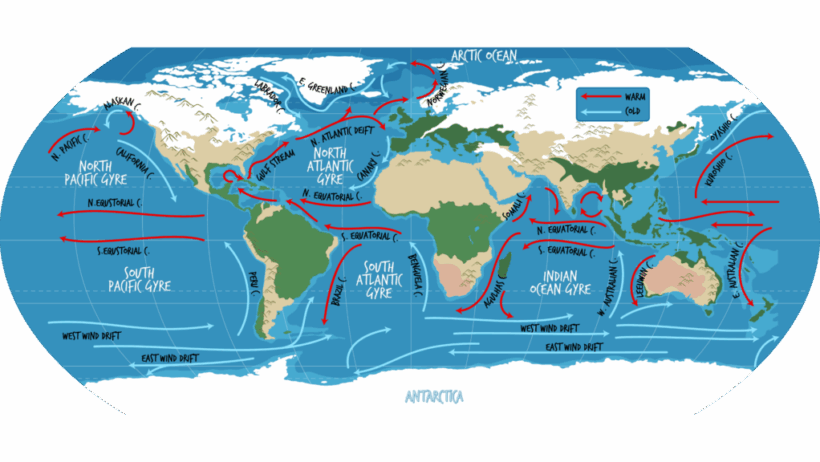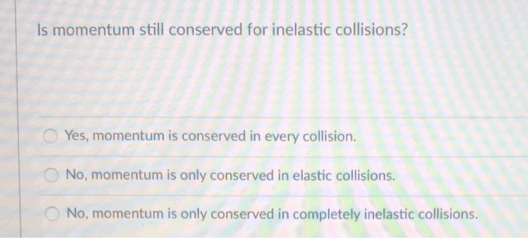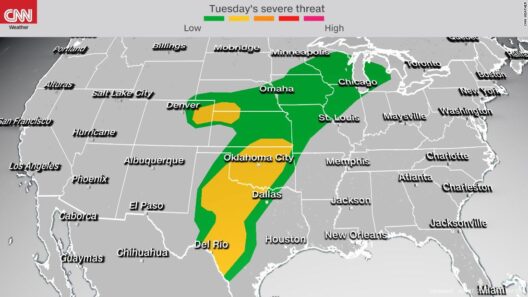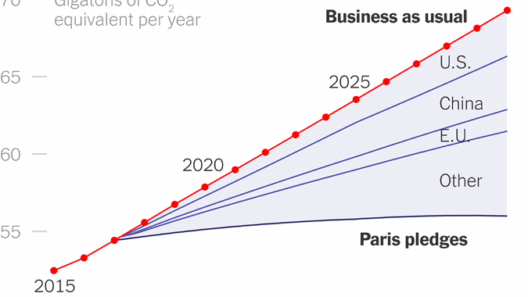Ocean currents are the lifeblood of the planet’s climate system, intricately linking various ecosystems and playing a pivotal role in regulating temperatures across the globe. However, as climate change accelerates, these currents are undergoing significant alterations that could have profound implications for global weather patterns, marine biodiversity, and even human livelihoods. This article delves into the mechanics of ocean currents, their current transformations due to global warming, and the wide-reaching consequences of these changes.
To commence, it is essential to comprehend the different types of ocean currents. Ocean currents can be classified into two primary categories: surface currents and deep-water currents. Surface currents, primarily driven by wind patterns and the Coriolis effect, generally flow horizontally across the ocean’s surface and are responsible for distributing heat from the equatorial regions towards the poles. Conversely, deep-water currents, part of the thermohaline circulation, are influenced by water density variances, which arise from salinity and temperature differentials. These currents operate on a global scale, executing a critical role in nutrient transport and carbon cycling.
Global warming is drastically affecting the thermal and salinity dynamics that govern these currents. As global temperatures rise, polar ice caps and glaciers melt, introducing a substantial influx of freshwater into the oceans. This phenomenon dilutes the saline content essential for maintaining the density-driven thermohaline circulation. Consequently, regions historically characterized by robust currents may experience stasis or even reversals in direction. Such alterations can elicit a cascade of effects that reverberate across the globe.
The acceleration of surface currents poses immediate climate implications. Research indicates that the Gulf Stream, a vital surface current that transports warm water from the Gulf of Mexico to the North Atlantic, is weakening. This decline could precipitate harsher winters in Europe and increased storm intensity along U.S. coastlines. The potential for unusual weather patterns raises significant concerns, as an unstable climate can culminate in severe geopolitical tensions over resources and habitation.
Moreover, changes in ocean currents are anticipated to disrupt marine ecosystems profoundly. Currents serve as highways for marine species, aiding in their migration and contributing to the distribution of nutrients throughout the oceans. As currents shift, the habitats of numerous marine organisms may be adversely affected. Coral reefs, often considered the “rainforests of the sea,” are particularly vulnerable to altered water temperatures and flow patterns. A disruption in nutrient delivery can exacerbate coral bleaching—an alarming phenomenon already acutely observable throughout the world’s oceans.
Impacts extend beyond biological ramifications. The fishing industry, reliant on predictable fish migration patterns, may face considerable challenges. As species migrate to follow their changing habitats, fishermen may find themselves grappled with diminishing catches, which can destabilize local economies and threaten food security in vulnerable communities. Evidently, altering ocean currents may stir a complex mixture of socioeconomic consequences intertwined with ecological distress.
It’s also vital to address the interactions between ocean currents and the global carbon cycle. Oceans act as significant carbon sinks; they absorb excessive carbon dioxide generated by human activities. However, as surface currents accelerate due to warming, the efficiency of these carbon sinks may decline. If nutrients do not circulate appropriately due to interruptions in current patterns, the biological pump—an essential process whereby marine organisms sequester carbon—may falter, leading to heightened atmospheric carbon levels and further entrenching global warming.
To mitigate the repercussions of these shifting ocean currents, proactive measures must be implemented. Transitioning toward renewable energy sources can minimize the overall carbon footprint, thereby alleviating some pressures on climate change. Furthermore, investing in sustainable fishing practices and protecting marine habitats can enhance resilience against the impending ecological shifts. These solutions demand collaborative international action, underscoring the interconnectedness of global systems.
Education, advocacy, and public engagement remain paramount in fostering a sense of stewardship toward the oceans. As the custodians of the planet, societies must recognize and act upon the scientific consensus that climate change is not merely an environmental issue—it’s a multifaceted crisis that demands a comprehensive, informed response. Citizens must urge policymakers to prioritize environmental legislation that addresses these urgent issues with the seriousness they merit.
In summation, ocean currents represent a critical component of the earth’s climate system. As global warming progresses, the transformation of these currents could trigger a multitude of adverse effects, impacting ecosystems, human livelihoods, and global climates alike. A thorough understanding of these changes is essential, as is the collective action needed to mitigate their far-reaching consequences. It is imperative to recognize that the changing tides are not just waves on the ocean but are representative of the profound shifts occurring within our climate system. Our future depends on comprehending and responding to these changes with urgency and foresight.








